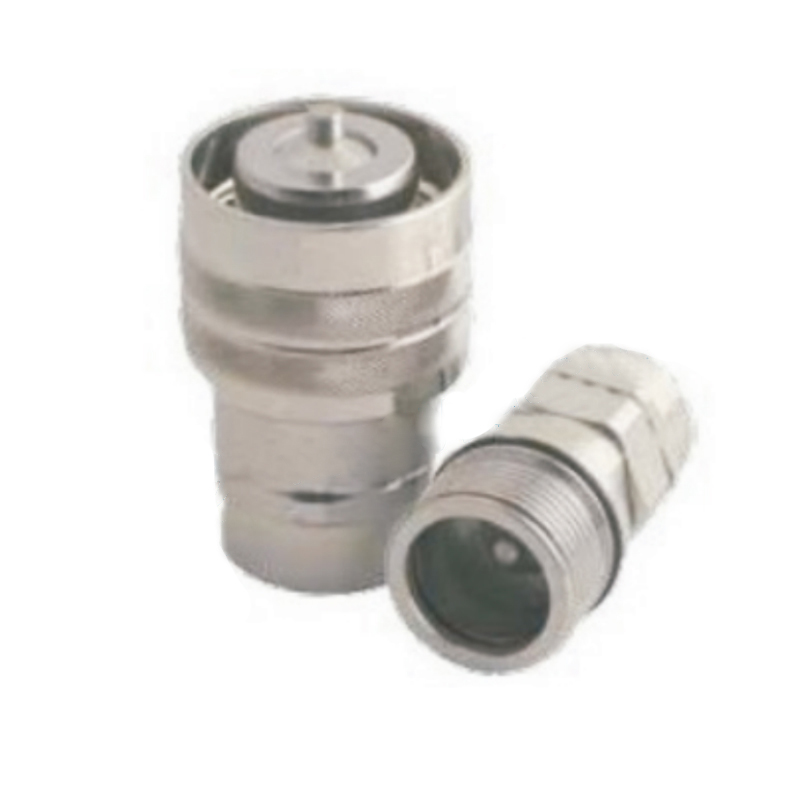Call us
+86-13732136622
+86-15058221666

Environmental factors such as temperature and chemical exposure play crucial roles in the selection of a quick disconnect coupling. Here's how they affect the choice:
Temperature: Extreme temperatures can significantly impact the performance and longevity of quick disconnect couplings. High temperatures can cause materials to soften, deform, or lose their mechanical properties, bring about leaks or failure. Conversely, low temperatures can make materials brittle, increasing the risk of cracking or breakage. When selecting a quick disconnect coupling, it's crucial to consider the operating temperature range of both the fluid being transferred and the environment in which the coupling will be used. Materials such as stainless steel, brass, or specialized high-temperature alloys may be necessary for applications involving heat, while materials like PTFE (polytetrafluoroethylene) or certain elastomers are better suited for low-temperature environments.
Chemical Compatibility: Different fluids have varying chemical compositions that can react with the materials of the coupling, bring about corrosion, swelling, or chemical breakdown. It's essential to select materials that are chemically compatible with the fluids being transferred to ensure the integrity of the coupling and prevent contamination of the fluid stream. For example, aggressive chemicals like acids, solvents, or corrosive substances may require couplings made from materials such as stainless steel, Hastelloy, or specific polymers like PEEK (polyetheretherketone) or PVDF (polyvinylidene fluoride) that offer chemical resistance.
Abrasion Resistance: Environments with abrasive substances, such as slurries or particulate-laden fluids, can cause accelerated wear and damage to the sealing surfaces, valves, or moving parts of quick disconnect couplings. Choosing materials with high abrasion resistance is crucial to ensure prolonged service life and prevent premature failure. Hardened steel, ceramic coatings, or abrasion-resistant polymers like polyurethane or polyamide can help mitigate the effects of abrasion and maintain the performance of the coupling in such harsh conditions.
UV Exposure: Outdoor applications expose quick disconnect couplings to ultraviolet (UV) radiation, which can degrade certain materials over time, bring about cracking, fading, or loss of mechanical properties. UV-resistant materials or coatings are essential to protect the coupling from UV-induced degradation and maintain its structural integrity and performance. Materials such as PVC (polyvinyl chloride), EPDM (ethylene propylene diene monomer), or fluoropolymers like FKM (fluoroelastomer) are commonly used for their UV resistance properties.
Pressure and Temperature Cycling: Environments with frequent pressure and temperature fluctuations, such as hydraulic systems, pneumatic applications, or steam lines, subject quick disconnect couplings to cyclic stresses that can bring about fatigue and premature failure. It's essential to select materials with good thermal stability, low thermal expansion coefficients, and high mechanical strength to withstand these cyclic loads without deformation or damage. Materials like stainless steel, brass, or engineered polymers with reinforced fibers offer resistance to pressure and temperature cycling, ensuring reliable performance in demanding applications.
GT-CVV Manual thread locked type high flow hydraulic quick coupling

The GT-CVV manual thread locked type high flow hydraulic quick coupling is a type of hydraulic connector used to quickly and easily connect and disconnect hydraulic lines. This coupling is designed for use in high-flow applications, where a large volume of hydraulic fluid needs to be transferred quickly and efficiently. The GT-CVV manual thread locked type high flow hydraulic quick coupling consists of two halves, which are connected and disconnected by manually turning a locking sleeve. The coupling features a valve in each half, which opens when the halves are joined to allow hydraulic fluid to flow. When the halves are separated, the valves close to prevent leaks and spills.

KZF is a brand that produces close type pneumatic and hydraulic quick couplings. These couplings are designed to provide a fast and efficient way to c...
See Details
● Poppet valves available to prevent uncoupled leakage. ● Poppet valves open automatically when coupled, within rated working pressure, to keep the ...
See Details
● New valve design, it cans resistance damage from high flow and the pressure of impulse that providing advanced performance. ● Machined from solid s...
See Details
● The smooth, open bore with no valving in either halfoffersminimal pressure drop and allows easy cleaning in applications where the same lines are us...
See Details
● The smooth, open bore with no valving in either half offers minimal pressure drop and allows easy cleaning in appl-ications where the same lines are...
See Details
● The smooth, open bore with no valving in either half offers minimal pressure drop and allows easy cleaning in applications where the same lines are...
See Details
● Poppet valves available to prevent uncoupled leakage. ● Poppet valves open automatically when coupled, within rated working pressure, to keep the f...
See Details
Application and Features:These coupling be adequate for dielectric situation with engine oil, waternd air, nominal pressure 32MPa, medium temperature-...
See Details
Metal Parking Station For Socket GT-VF Series Quick Couplings.
See Details
Contact Us